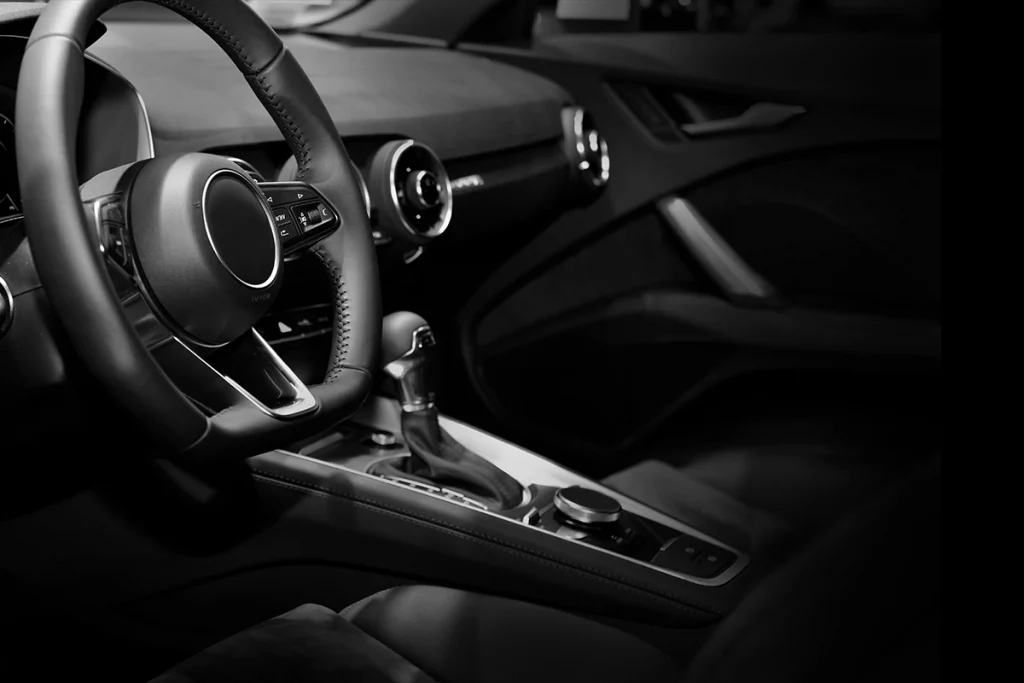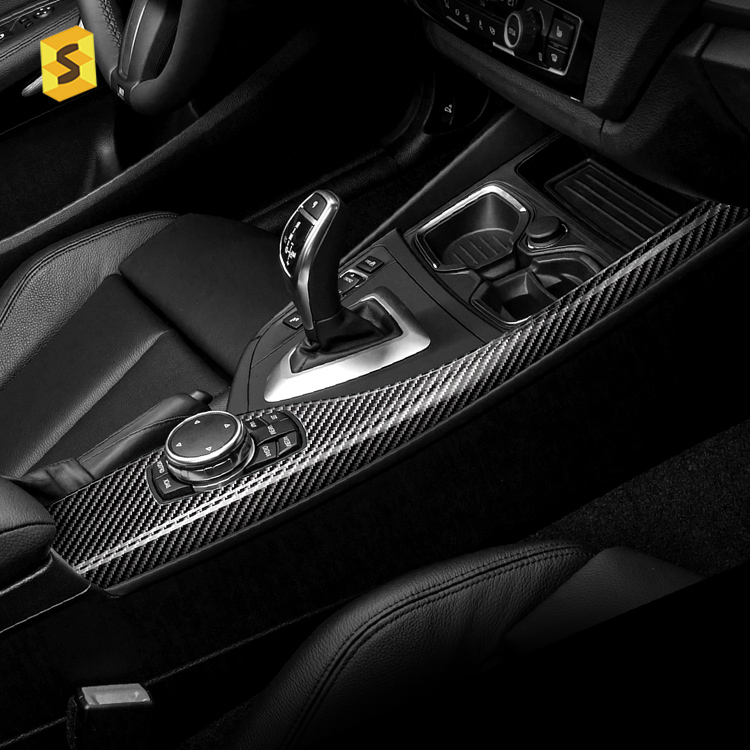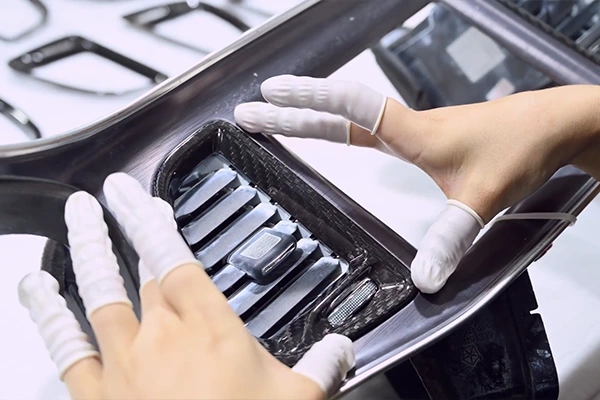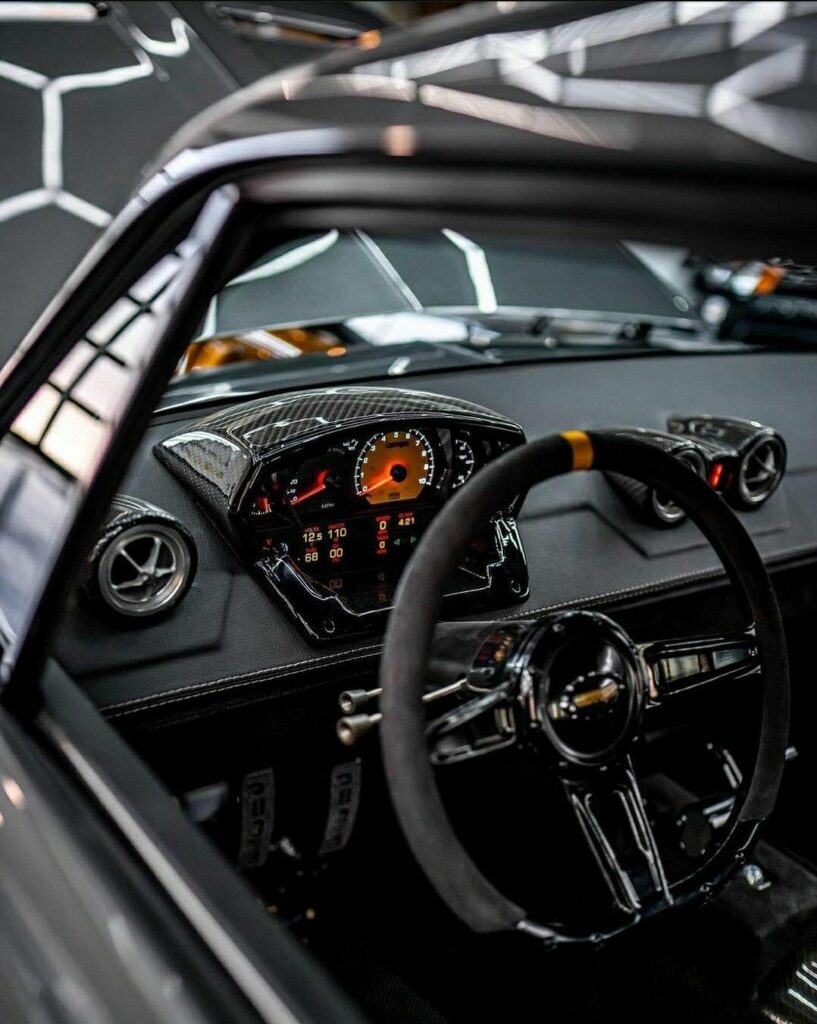
Source: Istock
Owning a car for most people is a necessity today. Without one, you might not be able to get to your job, your school, or commute anywhere you want to. When it comes to cars, the shiny exterior and sleek lines might spring to most people’s minds. But when you think about buying a car, the appearance of a car should not be the only thing you are concerned with, the interior is equally as important, specifically, its comfort, style, and functionality which basically depend on car interior accessories and their materials.
With a wide range of car interior materials available in the markets, you might feel overwhelmed by so many options, from classic leather fabric to lightweight and strong carbon fiber car exterior. Well, you’re in luck – this article will share with you about common car interior materials and automotive interior trim parts, including their types, pros and cons, and use.
Before going into the types and applications of car interior materials, it is necessary to make it clear what is car interior. Car interiors include automotive upholstery and accessories inside a vehicle, including automotive trim materials such as leather, nylon, and polyester, and auto accessories like the steering wheel, car seats, door handle, and side panels. Since drivers and passengers spend most of their time inside a car, the interior of a car should be comfortable, enabling passengers to have an enjoyable ride.
Why is the Car Interior so Important?

Source: Istock
Now that we have a clear definition of car interior, the next step is to learn the importance of car interiors for the automotive industry, car dealers, and customers.
The Automobile Industry
As an important part of a car, the car interior accounts for over 60% of a car’s overall design, far more than exterior designing, which indicates the importance and complexity of interior designing. That’s true. After all, car interior designers need to take into account a variety of factors, such as safety, style, ergonomic design, and choices of materials, in color and trim. Overall, interior designers need to strike a balance between aesthetics and functionality in the course of designing car interiors.
Manufacturers
While the outward appearance of a car catches the eye of customers, the interior carries considerable weight when customers are making their purchase decisions. After all, the car interior is the part customers see the most. A high-quality car with comfortable interiors and an impressive style definitely contributes a lot to car purchases. Hence, manufacturers and dealers also value car interiors.
Car Buyers
Similarly, the car interior is a key consideration, especially its materials, designs, and functions, when it comes to buying a car. Interior color shows the character of a car and reflects the taste and personality of the car owner. Dark-colored interiors convey sophistication, luxury, and a sense of calm. Big, bold colors such as red and yellow evoke happiness and energy and are associated with sporty, young, and aggressive drivers. Light interiors are more elegant, classy, and simple.
Beyond looking nice and stylish, the car interior also must be functional and durable which involves car ergonomics. The car interior is often designed ergonomically friendly, from the placement of car accessories to the design of seat position and buttons. For example, the driver can adjust various controls such as the seat height and mirrors to ensure maximum comfort and a good view of the road. Control buttons are accessible within arm’s reach. When the driver is on the road, his/her hand can reach any device and button he/she wants without eyes off the road. Driver-centered car interior provides passengers and drivers with driving comfort and pleasure while ensuring safety and ease of use.
Since car interiors are getting important to the automotive industry, car dealers, and buyers in terms of design, functionality, and aesthetic value, a basic understanding of trim and accessories materials helps us make the right decisions when buying a car. In the following content, we will get to know the common materials used in automotive upholstery and materials used in car accessories. Let’s begin with common fabrics used as automotive interior trim materials.
Common Fabrics

Source: Istock
The primary materials used for car interiors include leather, vinyl, nylon, and polyester. These materials are used depending on their own features, contributing to aesthetic value and comfort. To be honest, it is hard to tell which one is the best since these materials have their respective advantages and disadvantages and whether it qualifies as the interior material of a car involves personal preference and other factors, such as durability, affordability, comfort, ease of use and maintenance, and comfort.
Leather
- Introduction: Leather gives the interior a luxurious feel. It is often used in the production of car interiors of luxury cars, including seats, dashboards, to armrests.
- Pros: Leather is comfortable and soft, providing a stylish and comfortable ride. It is easy to clean and resists stains and liquids. When there are spills and dirt, it won’t soak them immediately. With a damp cloth, the stain can be wiped off easily. If leather is maintained well, it can last a lifetime. Leather represents luxury and good taste, adding up to the overall aesthetic of the interiors. As a premium material, leather also adds greatly to the resale value of the car.
- Cons: Leather is significantly expensive compared to other fabrics and is therefore not affordable for every car buyer. It is vulnerable to scratches by sharp edges and objects like pet nails. It is complex and expensive to repair. Plus, regular maintenance is required to keep the leather looking nice and to prevent the material from cracking over time.
Vinyl
- Introduction: Vinyl is an increasingly popular material used in the interiors of cars. Looking almost identical to leather but much more cost-effective, vinyl is an ideal option for those who want the look of leather with a tight budget or who look for an environmentally-friendly material. Vinyl is also favored by manufacturers as a perfect compromise between cost and quality.
- Pros: The biggest advantage of vinyl lies that it is easy to clean and maintain. As a nearly non-porous material, vinyl is not susceptible to staining or dirt. It is fairly stain-resistant. If you accidentally spill something on vinyl, you can simply wipe it off with a damp cloth. Vinyl has good durability. It will last a long time without fading or cracking.
- Cons: Similar to leather, vinyl is easily scratched or damaged by sharp objects. The material absorbs more heat in the summer so you may get sweaty and uncomfortable when sitting on vinyl-made surfaces.
Nylon
- Introduction: As a durable, budget-friendly fabric, nylon is one of the most common materials used in fabric upholstery.
- Pros: Nylon is renowned for impressive resistance, durability, affordability, and versatility. As a sturdy and durable material, nylon stands up to day-to-day wear and tear and lasts a long time. It is available in a wide variety of colors, patterns, and textures. Nylon materials aren’t that expensive to produce, so car manufacturers prefer this lower-cost material.
- Cons: Due to its porous nature, nylon easily and quickly stains. Spills on the seats can be soaked into the cushion structure, requiring fairly regular maintenance. It also absorbs odor easily.
Polyester
- Introduction: Polyester is a very popular material used in car interiors. It feels and looks similar to suede but is much cheaper, making it a good alternative to suede and leather.
- Pros: Similar to suede, polyester is very soft and comfortable but inexpensive, giving the interior a more luxurious feel. Polyester is a breathable fabric. So it won’t get hot in the summer and stick to you. Besides, polyester can withstand a lot of wear and tear, making it an excellent choice for families with children or pets.
- Cons: Polyester is prone to staining as it absorbs unpleasant odors and gets stained by dirt and liquids easily due to its porous texture. Therefore, it requires regular cleaning. Also, cleaning polyester can be a hassle. To make polyester look new again, damp cloth and water alone are far from enough. A cleaning solution designed for microsuede is required to clean off the accumulated dirt.
Common Accessories Materials

Source: Pexels
Different fabrics are used inside a car depending on affordability, comfort, ease of cleaning and maintenance, and aesthetic value. Likewise, different types of materials are needed to design different parts and accessories of a car, and these materials affect the durability, design, and quality of a vehicle. Here are several common materials used in car accessories: steel, aluminum, carbon fiber, and fiberglass.
Steel
Steel is perhaps the most widely used in the production of cars today. The composition of the vehicle is over 50% made of steel. But this does not mean only one type of steel is used in car parts. In fact, various types of steel are utilized in the production of a variety of car parts and components to achieve a certain level of durability and functionality. Steel is very hard and strong, and provides great corrosion resistance. All these properties make it suitable as a material for car manufacturing. Generally, steel is mostly used in a car’s chassis and body, including brakes, door panels, the frame of the car, and the support beams.
Fiberglass
Fiberglass has become quite popular in the automotive industry for the following good reasons. Fiberglass is durable. It is resistant to rust, corrosion, and extreme weather condition, providing good impact resistance and tensile strength. It can replace steel in areas where steel can get easily corroded. As a lightweight material, fiberglass is especially important for car parts where weight is considered a crucial factor. Fiberglass is flexible. It can be molded into any desired shape. With these advantages, fiberglass is commonly used for the brake pads, clutches, and door panels of commercial vehicles.
Aluminum
Aluminum has been used in the automotive industry for decades. Likewise, it also has some unique properties that made this different from other metals. It is much stronger than steel. While steel becomes brittle at low temperatures, aluminum is able to withstand extreme temperatures and pressures. Aluminum is a lightweight and corrosion-resistant material. This makes aluminum ideal for manufacturing car parts such as automotive body panels and air conditioner condensers. It can also be formed into complex shapes by bending and shaping processes. As it’s lightweight, strong, and durable, aluminum increases a car’s performance and makes the car lightweight which increases fuel efficiency.

Carbon Fiber
Carbon fiber is a new premium material used for producing car parts, and carbon fiber car accessories are getting popular in the automobile industry, especially in high-end race vehicle manufacturing. Since some cars – notably sports cars – are intended to be speedy, carbon fiber can improve speed and body strength while reducing the overall weight of a vehicle. For car parts intended to be lightweight but durable, carbon fiber is also the perfect material. Carbon fiber car parts are much stronger but lighter. It can withstand heat and pressure over time and won’t deform. With this lightweight-but-strong benefit and sleek appearance, carbon fiber car interiors are getting increasingly popular in the automotive industry. Carbon fiber is often used in car body components, wheels and rims, and interior finishes.
Key Takeaway

Source: Istock
The automotive industry is constantly evolving and there are new materials from leather to polyester and car accessories from steel-made door pedals to carbon fiber interiors. Car parts are continually being upgraded. With so many materials and interiors on the market, it is surely hard to decide which car is right for you. The point is car exteriors and interiors. And the latter one deserves your careful consideration because the interior of the vehicle is the place where you’ll be spending most of your time.
Now that we have looked at four types of common automotive trim materials and four accessories materials used in car interiors, pros, and cons, as well as their applications, it’s easy to tell how these materials could benefit us and our vehicles. Next time when buying or updating a car, you can understand how these interior materials are used in the right applications and what kind of car interior agrees with your needs and style.







